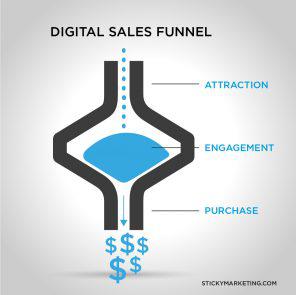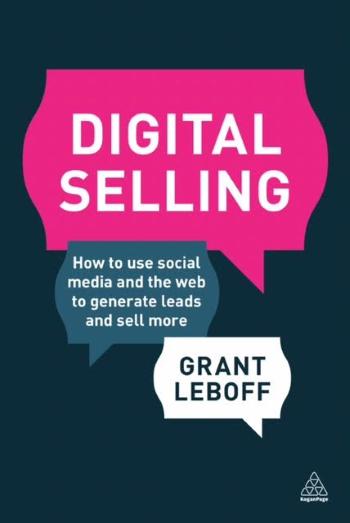How to Funnel the Sale in a Digital Age
Sales funnels are large at the top and narrow at the bottom, right? Not anymore, according to the author of Digital Selling. Here's how a sales funnel works in today's digital age.
Imagine if you were trying to run a modern grocery store with deliveries made by horse and wagon. Or running a twenty-first-century finance department on a nineteenth-century accounting models. Yet sales and marketing departments are still working from a “purchase funnel” model that was developed 120 years ago. It’s an antiquated system that doesn’t fit a profoundly transformed business world.
So what works? A strong, compelling online presence and a sales funnel with a new, cutting-edge shape. Here’s what it looks like:The sales funnel, developed by Elias St. Elmo Lewis in 1898, was so named because of the high number of prospective consumers at the top. The higher numbers meant more opportunities to win business, and leads were generated on foot and by phone. Back then, interruptive marketing messages were seen as providing value because that’s how consumers got informed. But that model works only when customers have scant access to information.
As purchasing decisions have migrated to the online arena, consumers have an overabundance of information and can often get real-time answers to their questions. Marketing message interruptions, especially on social platforms such as LinkedIn, Twitter, YouTube, and Facebook, can be seen as an annoyance. Bombarding prospects in those environments can lead to complaints and harm a company’s reputation.
As purchasing decisions have migrated to the online arena, consumers have an overabundance of information and can often get real-time answers to their questions. Marketing message interruptions, especially on social platforms such as LinkedIn, Twitter, YouTube, and Facebook, can be seen as an annoyance. Bombarding prospects in those environments can lead to complaints and harm a company’s reputation.
 Narrow at the top. No longer is it effective to “shout” at a mass of disinterested people and hope someone will pause to listen. Online sales and marketing departments have to attract relevant prospects by creating ‘value’ in the places where a company’s customers show up.
Narrow at the top. No longer is it effective to “shout” at a mass of disinterested people and hope someone will pause to listen. Online sales and marketing departments have to attract relevant prospects by creating ‘value’ in the places where a company’s customers show up.
Partnering with aligned providers and industry influencers is more likely to attract your target audience’s eyeballs. Rather than businesses choosing a market segment and bombarding it with messages, prospective customers need to choose the business.
Wide in the middle. In a marketplace that is digital, information-saturated, and highly social, attention is the most precious resource. A prospect who displays even a passive interest in a company needs to be engaged quickly by the sales and marketing folks.
Engagement looks like videos, articles, or podcasts. Companies can interact with prospective customers in person, via phone calls, emails or text messages. Contact could be weekly, monthly, or even quarterly. Good social CRM software and social media monitoring platforms can measure whether the engagement is effective. If you’ve kept your prospects’ attention, your business is likely to have a seat at the table once they’re ready to buy.
Narrow at the base. From the middle of the funnel, a small percentage of prospects will make a purchase at any given time. With the amount of data available, companies can extrapolate insights on how to improve their sales and marketing processes. ROI can be measured efficiently. What content leads to more questions? What percentage of engaged prospective customers makes a purchase? How long is the average sales cycle? In the digital world, sales and marketing is iterative, with data being used to constantly improve results.
A business model that lasts 120 years is a pretty good run by anyone’s standards. But to be successful in the digital world, companies have to embrace a strategy that fits the contemporary business environment. The Digital Sales Funnel enables organizations to compete and succeed in this transformed environment. That old sage Lewis might even agree.
Article Source: https://www.businessknowhow.com/internet/sales-funnel-online.htm


No comments:
Post a Comment